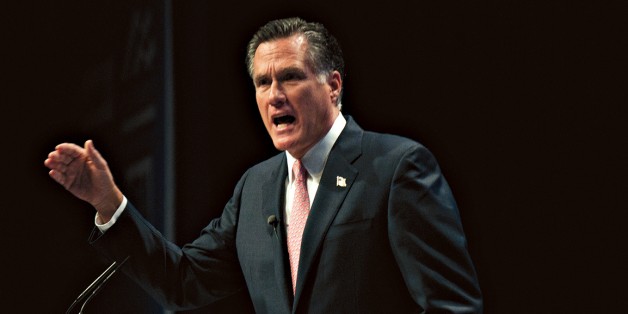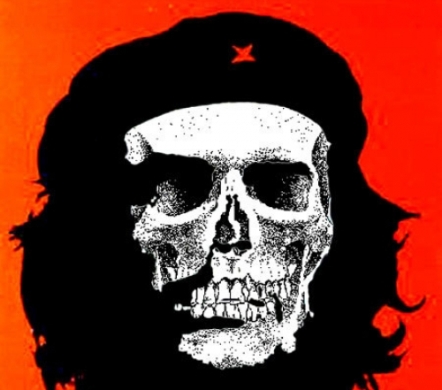If the Occupy Wall Street crowd thinks the NYPD is brutal, they’ve seen nothing. Che Guevara would clear the “occupation” in a New York nanosecond. His colleagues of the time recall him cheering the Soviet tanks slaughtering Hungarian freedom fighters on the streets of Budapest. The youths they machine-gunned and ground under their tank treads were all “Fascists and CIA agents,” he raved.
“I’m a Stalinist,” Che Guevara boasted to Cuban colleague Carlos Franqui in 1957. To, him, Nikita Khrushchev’s denunciations of Stalin’s violent purges were nothing but “imperialist lies!” However, when Khrushchev’s sent tanks and Siberian troops to massacre Hungarian protesters, Che later conceded it certainly helped ameliorate his judgment of the premier’s earlier doctrinal errors.
Forty-four years ago this week, Ernesto “Che” Guevara got a major dose of his own medicine. Without trial he was declared a murderer, stood against a wall and shot. If the saying “What goes around comes around” ever fit, it’s here.
“When you saw the beaming look on Che’s face as the victims were tied to the stake and blasted apart by his firing squads,” said a former Cuban political prisoner Roberto Martin-Perez to this author, “you saw there was something seriously, seriously wrong with Che Guevara.” As commander of the La Cabaña execution yard, Che often shattered the skull of a condemned man (or boy) by firing the coup de grace bullet himself. When other duties tore him away from his beloved execution yard, he consoled himself by viewing the slaughter. Che’s second-story office in Havana’s La Cabaña prison had a section of wall torn out so he could watch his darling firing squads at work.
Two years ago, the U.K. Guardian interviewed Oscar-winning actor Benicio del Toro regarding his Cannes-winning role as Guevara in Stephen Soderbergh’s movie Che. “Dammit This Guy Is Cool!” was the interview title. “I hear of this guy, and he’s got a cool name, Che Guevara!” said del Toro. “Groovy name, groovy man, groovy politics! So I came across a picture of Che, smiling, in fatigues, and I thought, ‘Dammit, this guy is cool-looking!'”
In effect, Benicio del Toro probably revealed the inspiration (and daunting intellectual exertion) of millions of Che fans, including hundreds on Wall Street last week.
As a celebrity-hipster fan of Che Guevara, del Toro has plenty of company. Johnny Depp often wears a Che pendant and, in a Vibe magazine interview, admitted to “digging” the man. In fact, had del Toro or Depp been born earlier and in Cuba and attempted a rebel lifestyle, their “digging” of Castroite Cuba would have been of a more literal nature. They’d have found themselves chained and digging ditches and mass graves in a prison camp system inspired by the man they “dig.” Had their digging lagged, a “groovy” Communist guard might have shattered their teeth with a “groovy” Czech machine gun butt, or perhaps slashed their buttocks with some “groovy” Soviet bayonets.
In a famous speech in 1961, Che denounced the very “spirit of rebellion” as “reprehensible.” “Youth must refrain from ungrateful questioning of governmental mandates,” commanded Guevara. “Instead, they must dedicate themselves to study, work and military service, should learn to think and act as a mass.”
Those who “choose their own path” (as in growing long hair and listening to “Yankee-Imperialist” rock & roll) were denounced as worthless “roqueros,” “lumpen,” and “delinquents.” In his famous speech, Che Guevara even vowed “to make individualism disappear from Cuba! It is criminal to think of individuals!”
Tens of thousands of Cuban youths learned that Che Guevara’s admonitions were more than idle bombast. In Guevara, the hundreds of Soviet KGB and East German STASI “consultants” who flooded Cuba in the early 1960s found an extremely eager acolyte. By the mid-’60s, the crime of a “rocker” lifestyle (blue jeans, long hair, fondness for the Beatles and Stones) or effeminate behavior got thousands of youths yanked out of Cuba’s streets and parks by secret police and dumped in prison camps with “Work Will Make Men Out of You” emblazoned in bold letters above the gate and with machine gunners posted on the watchtowers. The initials for these camps were UMAP, not GULAG, but the conditions were quite similar.
Today, the world’s largest image of the man whom so many hipsters sport on their shirts adorns Cuba’s headquarters and torture chambers for its KGB-trained secret police. Nothing could be more fitting.
The most popular version of the Che T-shirt, for instance, sports the slogan “fight oppression” under his famous countenance. This is the face of the second-in-command, chief executioner, and chief KGB liaison for a regime that jailed political prisoners at a higher rate than Stalin’s and murdered more people in its first five years in power than Hitler’s murdered in its first six.
One day before his death in Bolivia, Che Guevara — for the first time in his life — finally faced something properly describable as combat. He ordered his guerrilla charges to give no quarter, to fight to their last breaths and to their last bullet. With his men doing exactly what he ordered (fighting and dying to the last bullet), a slightly wounded Che sneaked away from the firefight and surrendered with fully loaded weapons while whimpering to his captors, “Don’t shoot! I’m Che. I’m worth more to you alive than dead!” His Bolivian captors viewed the matter differently. In fact, the following day they adopted a policy that has since become a favorite among many Americans who encounter (so-called) endangered species threatening their families or livestock on their property: “Shoot, shovel, and shut up.”
Justice has never been better served.


COMMENTS
Please let us know if you're having issues with commenting.